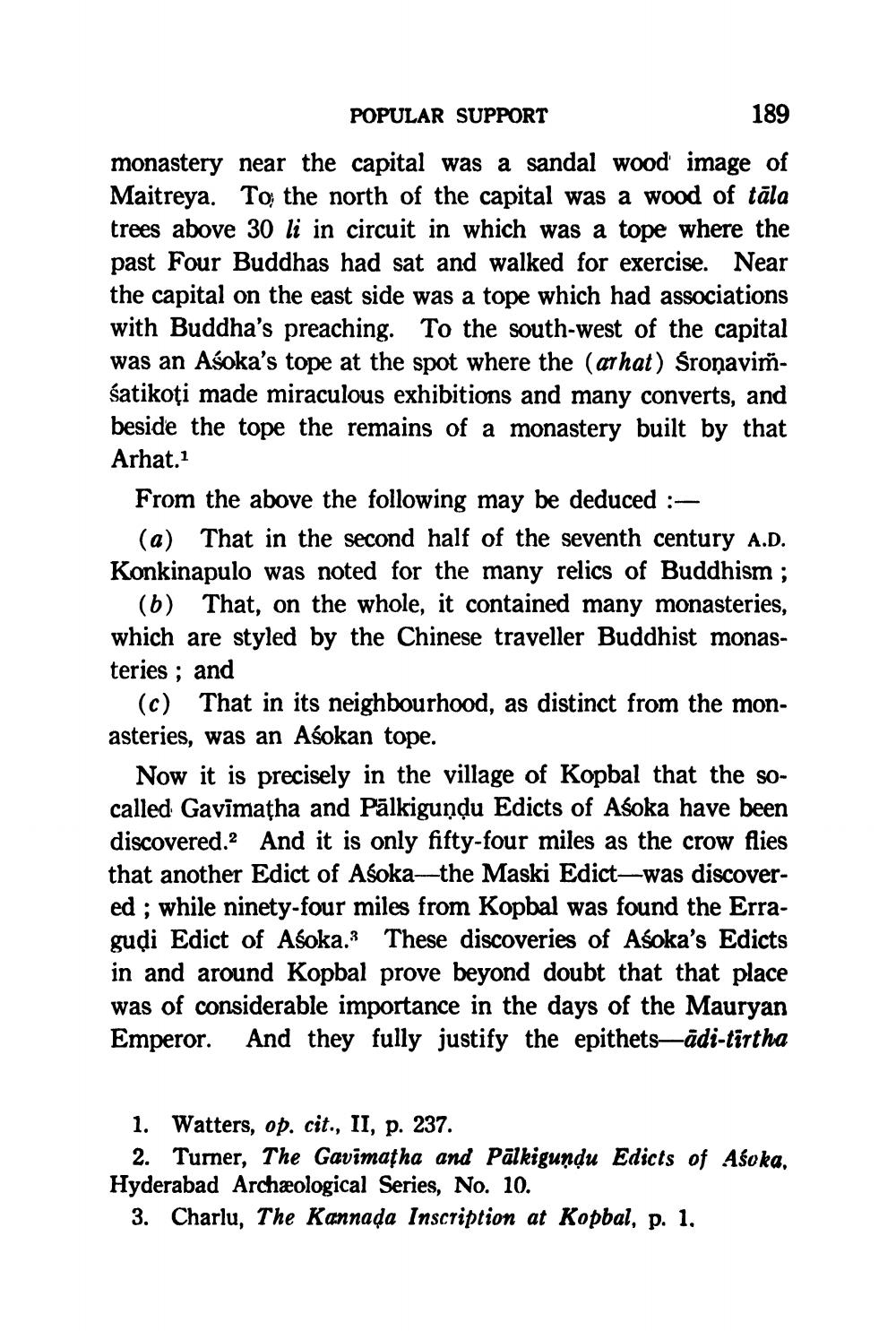________________
POPULAR SUPPORT
189 monastery near the capital was a sandalwood image of Maitreya. To the north of the capital was a wood of tāla trees above 30 li in circuit in which was a tope where the past Four Buddhas had sat and walked for exercise. Near the capital on the east side was a tope which had associations with Buddha's preaching. To the south-west of the capital was an Asoka's tope at the spot where the (ar hat) Śroņavimśatikoți made miraculous exhibitions and many converts, and beside the tope the remains of a monastery built by that Arhat.1
From the above the following may be deduced :
(a) That in the second half of the seventh century A.D. Konkinapulo was noted for the many relics of Buddhism ;
(6) That, on the whole, it contained many monasteries, which are styled by the Chinese traveller Buddhist monasteries; and
(c) That in its neighbourhood, as distinct from the monasteries, was an Aśokan tope.
Now it is precisely in the village of Kopbal that the socalled Gavimatha and Pālkigundu Edicts of Asoka have been discovered.2 And it is only fifty-four miles as the crow flies that another Edict of Asoka—the Maski Edict—was discovered; while ninety-four miles from Kopbal was found the Erraguļi Edict of Asoka. These discoveries of Asoka's Edicts in and around Kopbal prove beyond doubt that that place was of considerable importance in the days of the Mauryan Emperor. And they fully justify the epithets—ādi-tirtha
1. Watters, op. cit., II, p. 237.
2. Turner, The Gavimatha and Palkigundu Edicts of Asoka, Hyderabad Archæological Series, No. 10.
3. Charlu, The Kannada Inscription at Kopbal, p. 1.




